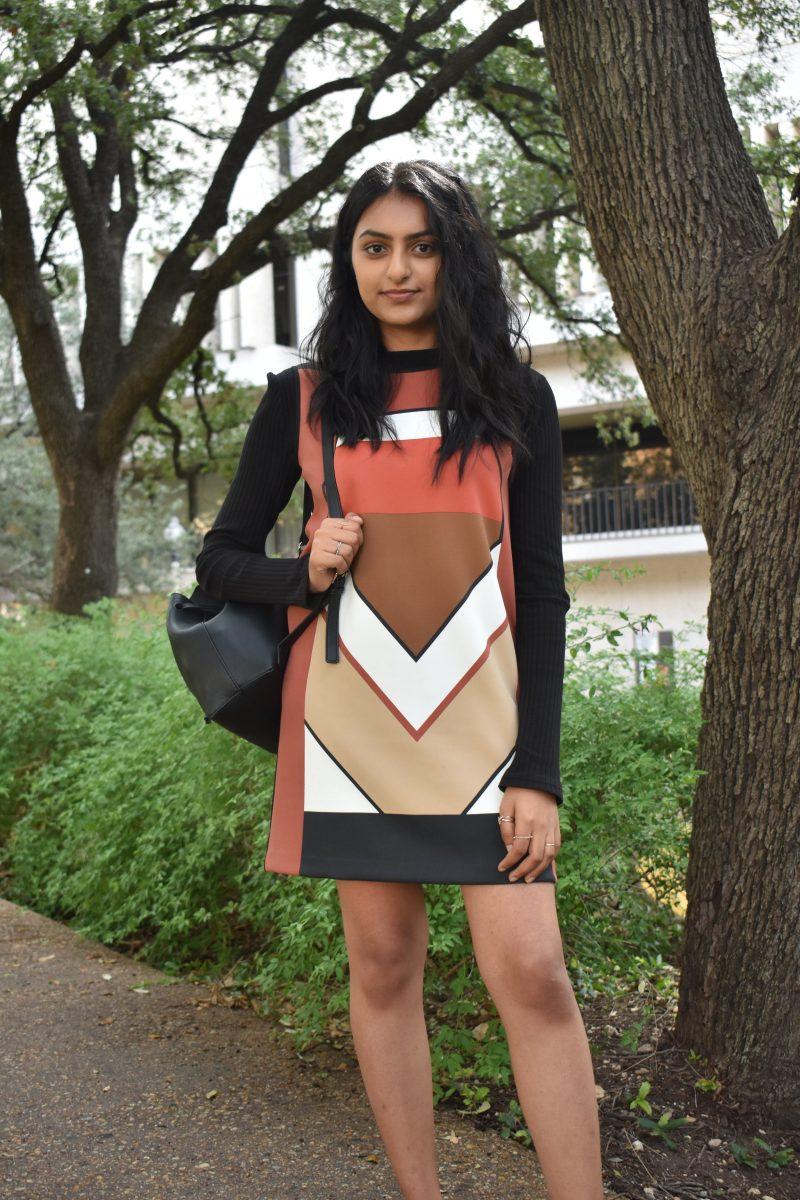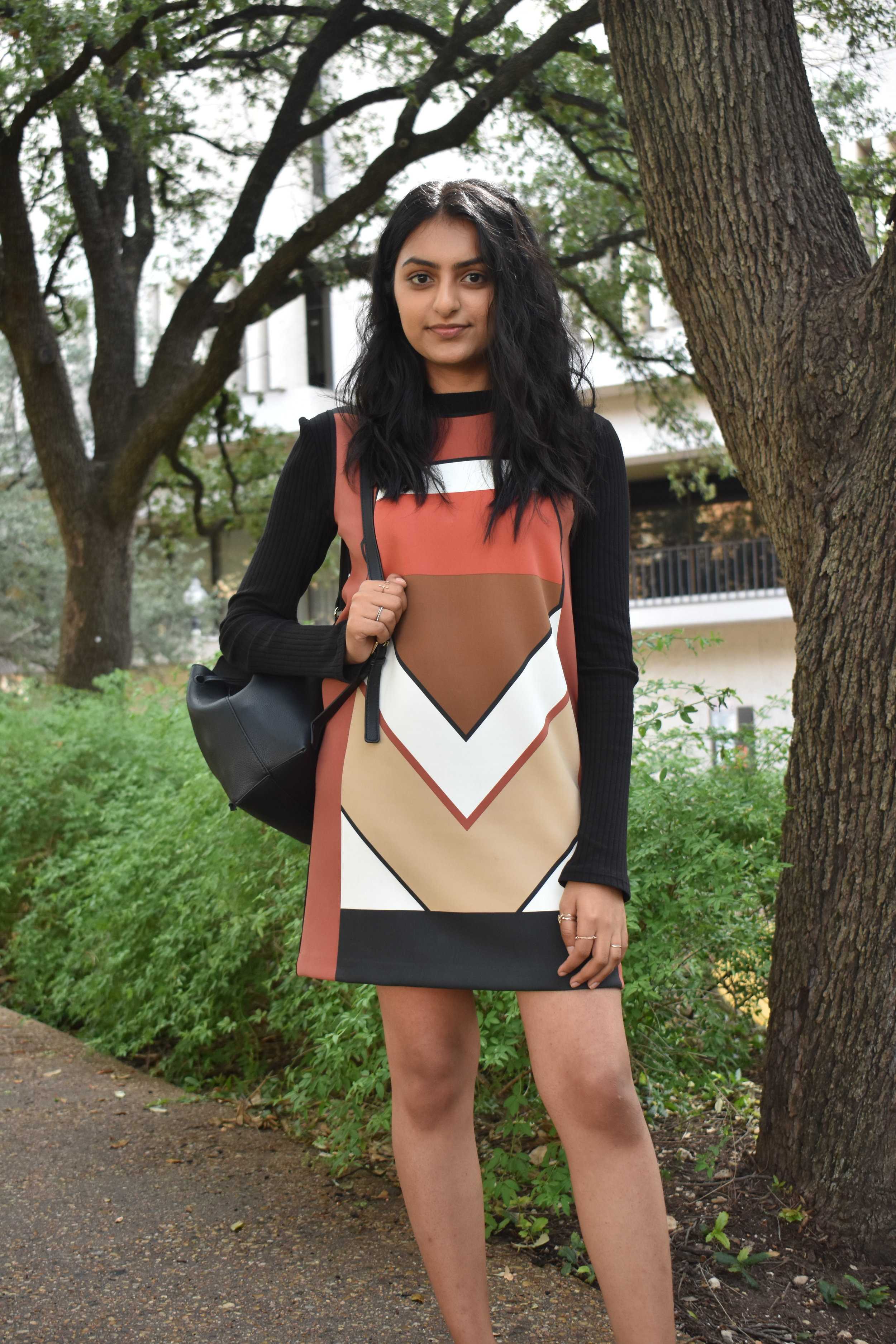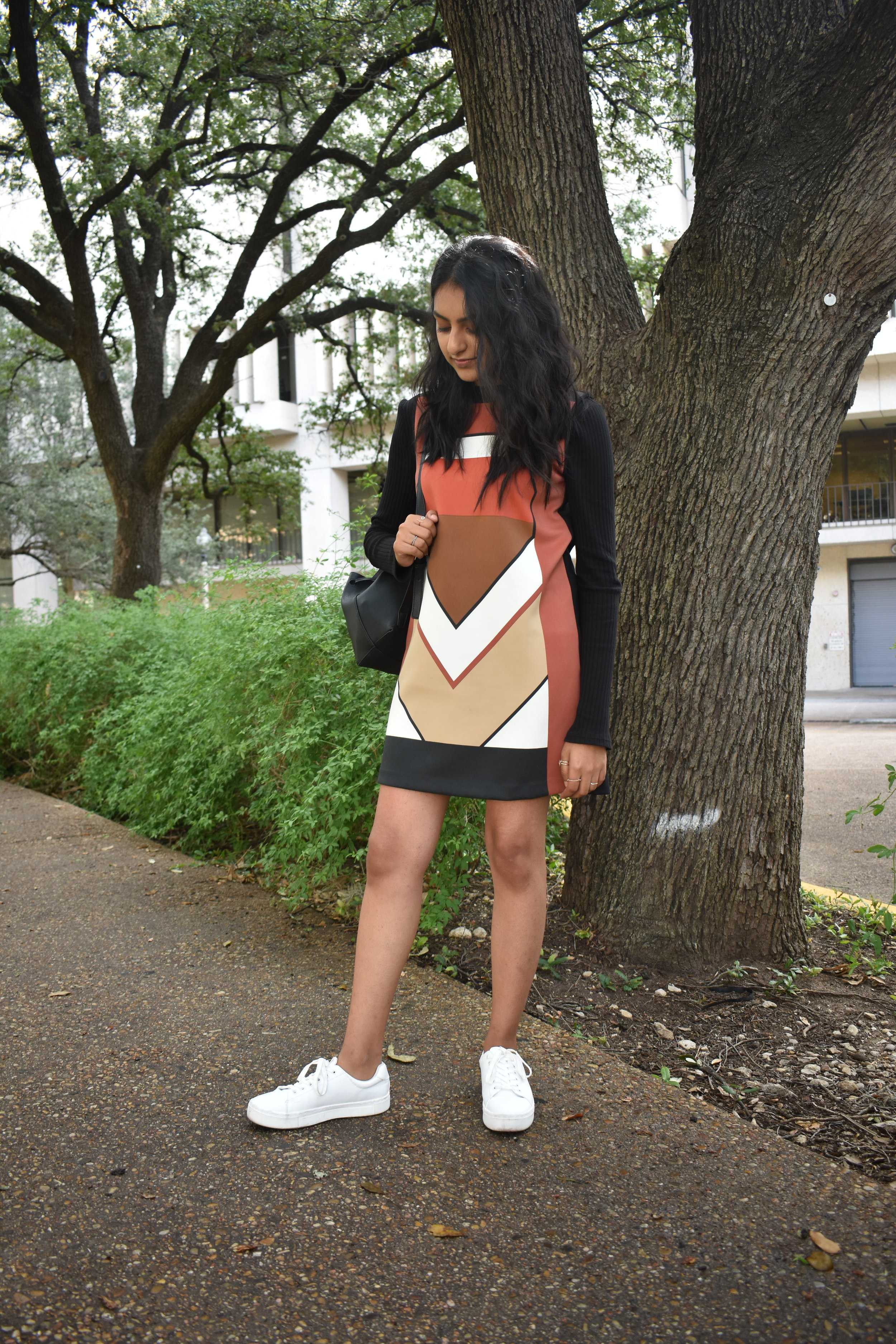Work to buy. The consumerist culture that encompasses our society today is based on this notion. The immediate gratification of purchasing something has made businesses wealthy, but some are changing their priorities.
Story by Liam Alteneder
Photos by Carlie Whisman
Minimalism can be characterized as the reassessment of priorities and losing the “extra stuff.” Some people have gone so far as to reduce everything down to even their homes. Others are taking this philosophy and applying it to their closets.
Komal Charania, an advertising senior at the University of Texas at Austin, is one of those people. “I started my sophomore year and realized that a lot of my things in my closet were just stuff for a specific season or just trendy for that moment,” Charania says. “I realized that it wasn’t sustainable for the environment and not even for my closet because I would be constantly getting rid of stuff.”
Charania looked to more minimal clothing pieces that were easier to mix and pair and eventually came across the concept of the “capsule closet.” This is the idea of compiling a select number of versatile items, usually around 30-40 items, and creating a sort of mini wardrobe. Generally, people will stick to these items for three months and then create a new capsule closet. “Project 333,” where the capsule closet idea originates, became an Internet phenomenon that got many people on board with the minimalist closet trend by challenging them to dress using 33 items or less for three months. Its popularity on YouTube elevated its virality.
However, textiles and apparel professor Gail Chovan points out some students may be practicing minimalism everyday through design. “The irony is that the most simple uniform for a UT student is a T-shirt, and that in itself is the most minimal design,” Chovan says. “If you think about it, everyone that is walking around is a minimalist right now.” In the context of design, Chovan characterizes minimalism as starting at the “most basic shape.”
A minimalist closet encompasses multiple purposes for people besides design as well. “If you’re looking at sustainability, the idea is to only buy or wear what you need so ‘fast fashion’ in itself is the absolute opposite of minimalism,” Chovan says.
As an advertising major, Charania realized that the trend of fast fashion can be detrimental to the environment and to the people working in the industry. “I wanted to be a conscious consumer in that sense,” Charania says.
Despite ZARA being one of her favorite retailers, Charania felt it necessary not to buy from them anymore due to these issues. “I think it’s important to tie in socially relevant issues into fashion and wear things for a purpose, not just because it’s cute,” Charania says. “I’m consciously making an effort to make everything in my closet multiuse.”
Not only does Charania use these techniques to reduce the clutter of her closet while also being conscious of the societal impact of her clothing, but they also help her spend less. “I don’t think I would really understand the importance of the dollar if I didn’t have parents that were immigrants who came to America and struggled to make it,” Charania says. “I think that’s an important value that I get from the different perspectives of my parents and being Pakistani-American.”
Though her daily thought process when getting dressed in the morning is focused on what is the easiest and most comfortable for her to wear, having a closet with a minimalist aesthetic makes her outfits clean and effective as well as sustainable.









































